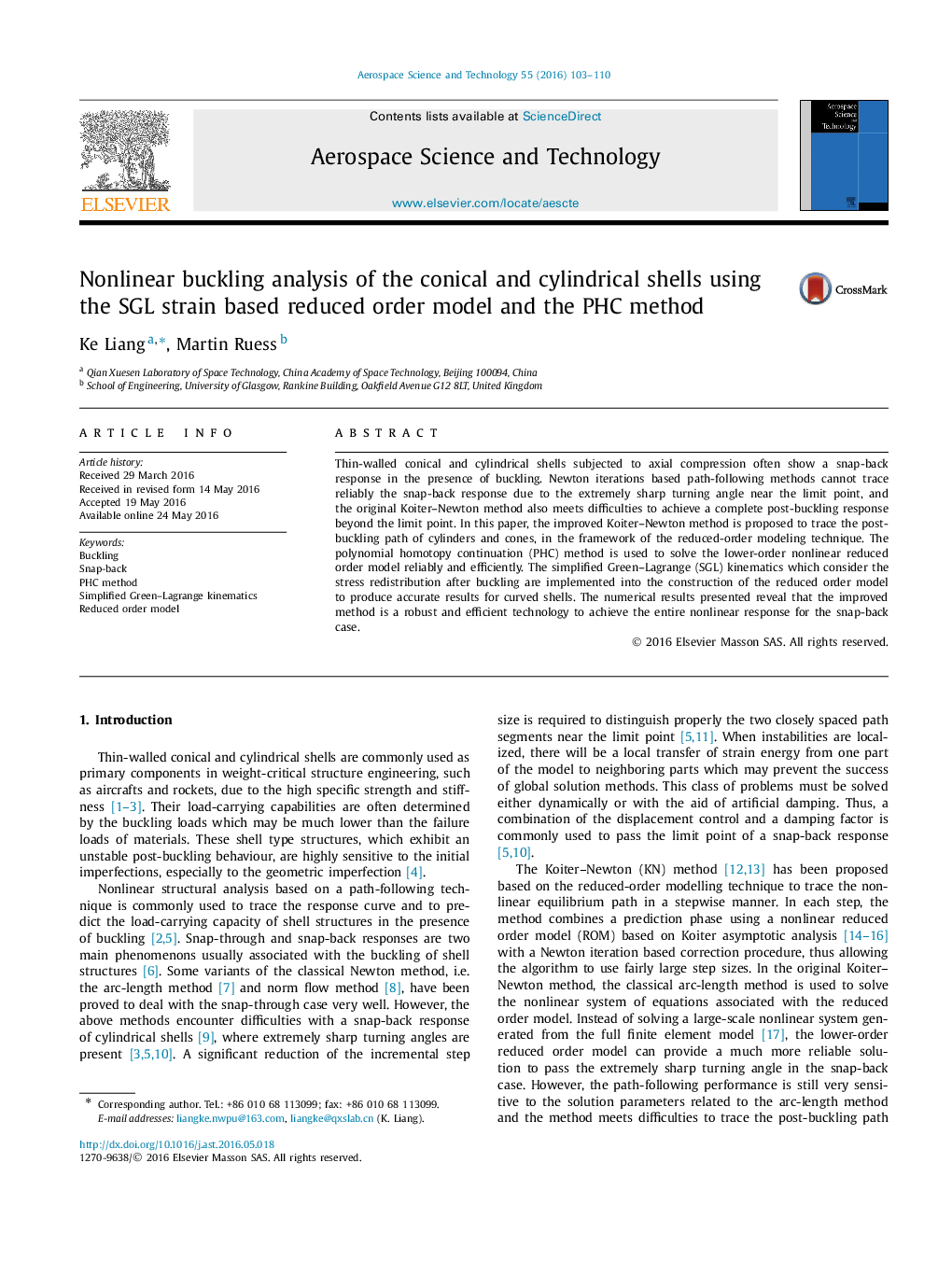| Article ID | Journal | Published Year | Pages | File Type |
|---|---|---|---|---|
| 1717545 | Aerospace Science and Technology | 2016 | 8 Pages |
Thin-walled conical and cylindrical shells subjected to axial compression often show a snap-back response in the presence of buckling. Newton iterations based path-following methods cannot trace reliably the snap-back response due to the extremely sharp turning angle near the limit point, and the original Koiter–Newton method also meets difficulties to achieve a complete post-buckling response beyond the limit point. In this paper, the improved Koiter–Newton method is proposed to trace the post-buckling path of cylinders and cones, in the framework of the reduced-order modeling technique. The polynomial homotopy continuation (PHC) method is used to solve the lower-order nonlinear reduced order model reliably and efficiently. The simplified Green–Lagrange (SGL) kinematics which consider the stress redistribution after buckling are implemented into the construction of the reduced order model to produce accurate results for curved shells. The numerical results presented reveal that the improved method is a robust and efficient technology to achieve the entire nonlinear response for the snap-back case.
